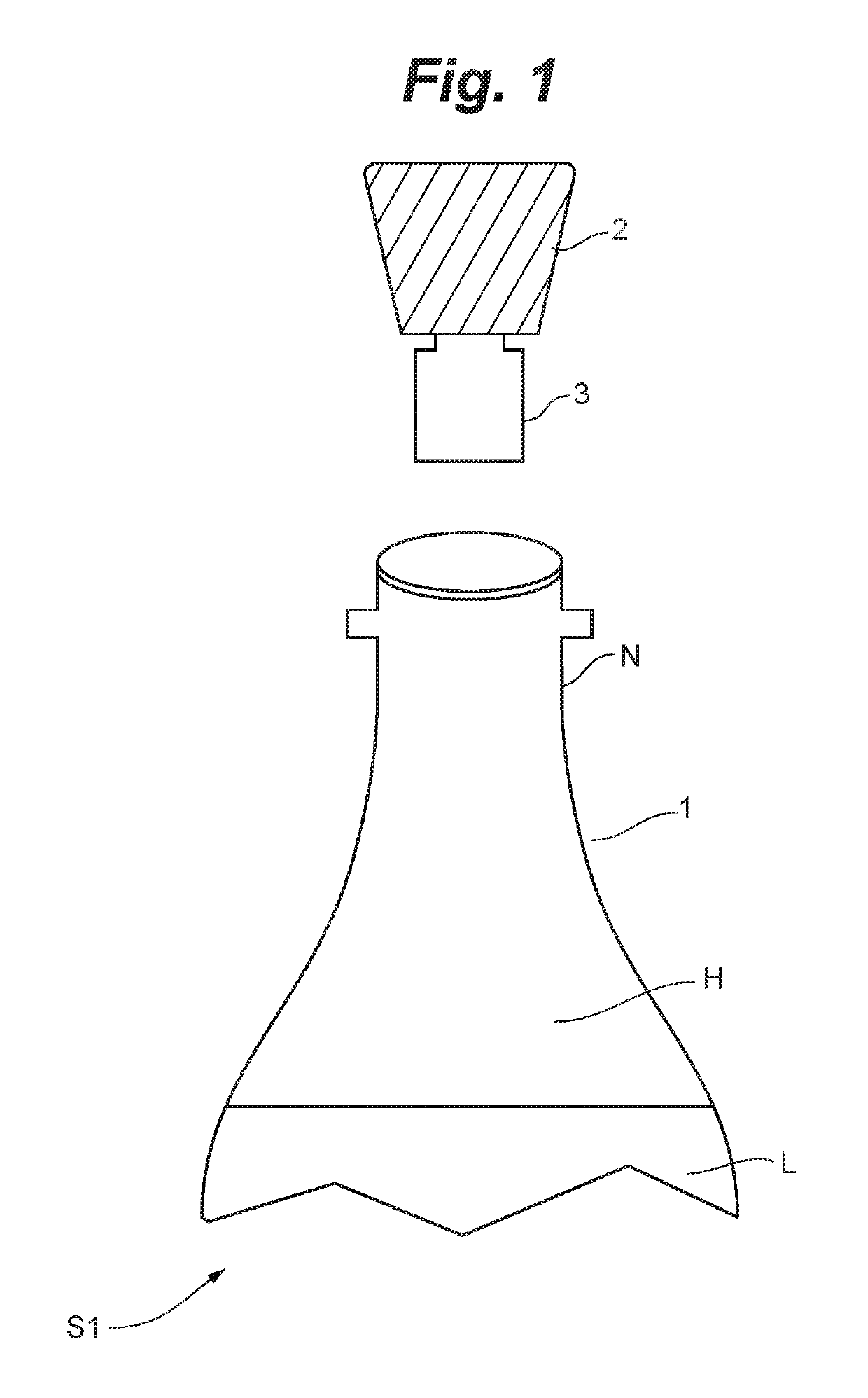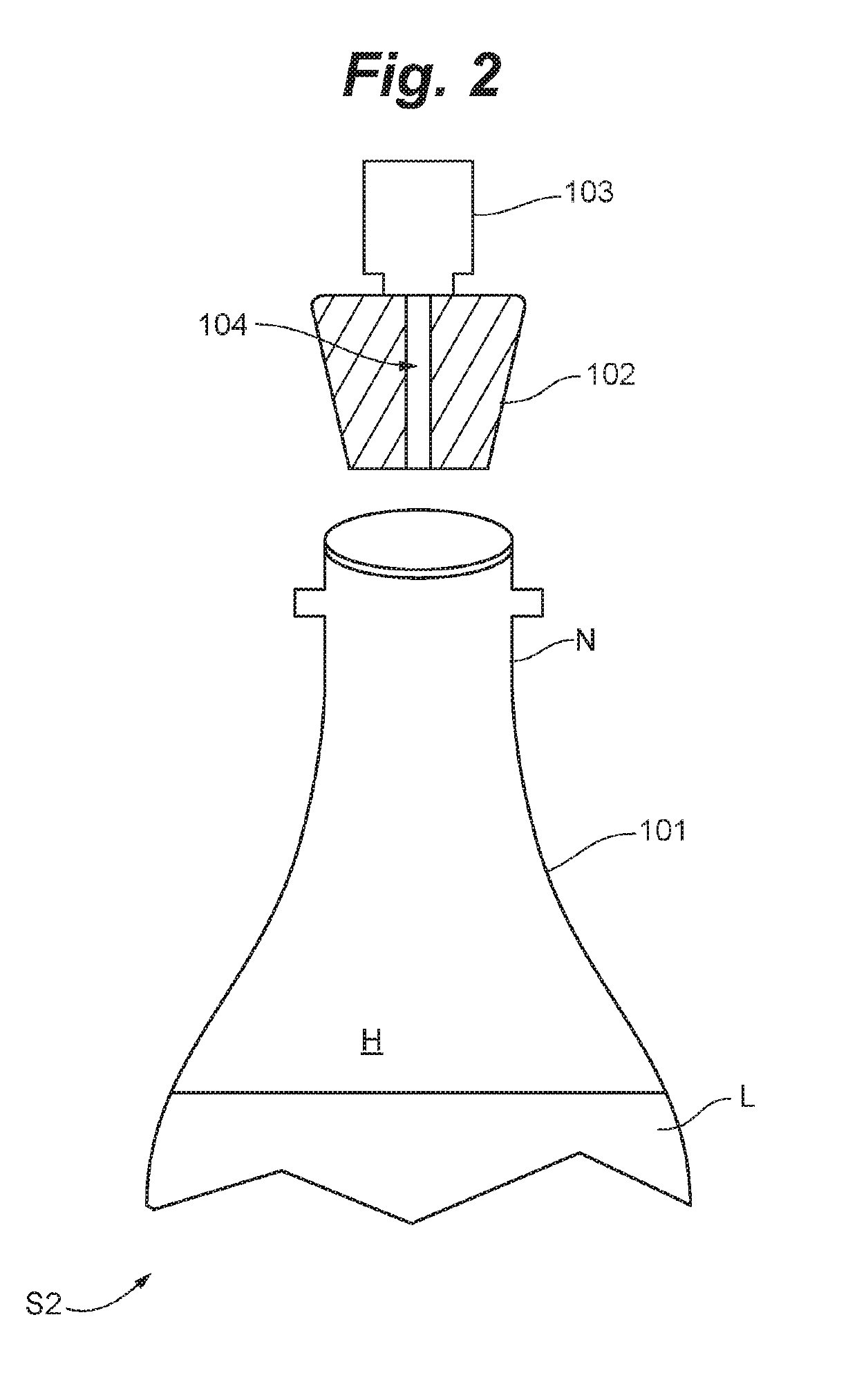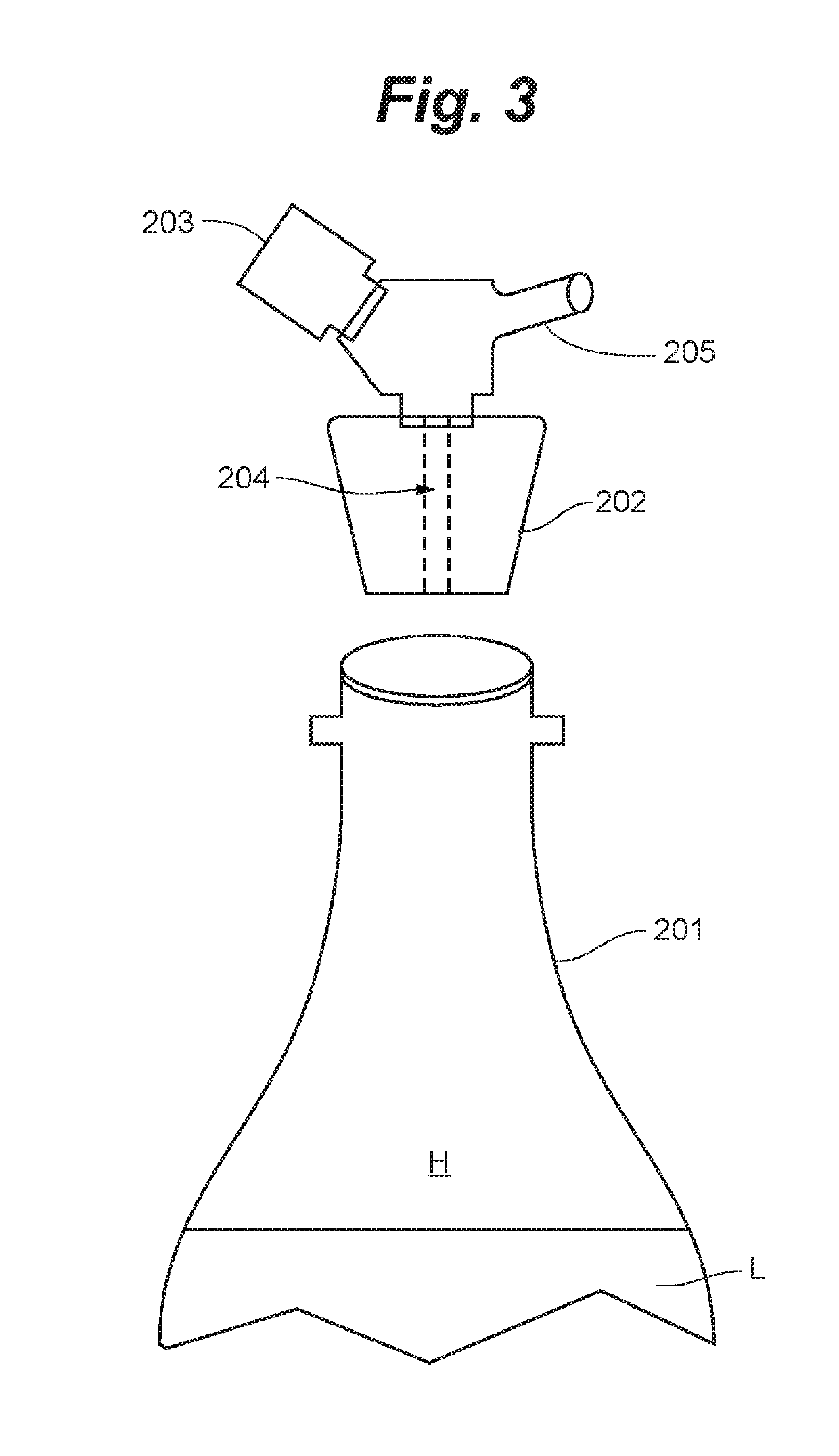Systems and methods for de-oxygenation of a closed container
a closed container and system technology, applied in the direction of containers preventing decay, closures with oxygen absorbers, liquid handling, etc., can solve the problems of affecting shelf life or product quality, limited shelf life before spoilage, and short shelf life, so as to enhance the seal created with the vessel
- Summary
- Abstract
- Description
- Claims
- Application Information
AI Technical Summary
Benefits of technology
Problems solved by technology
Method used
Image
Examples
Embodiment Construction
[0041]Conventional storage devices and methods for oxygen-sensitive substances such as wine, can include corks or stoppers, vacuum preservation, and / or air displacement. However, as discussed supra, wine is degraded by the presence of oxygen in the headspace of its container. Selective removal of oxygen allows the wine to retain substantially all or most of its native characteristics without the complications and limitations of conventional vacuum or air displacement preservation methods described above. Approximately 78% of the atmosphere is nitrogen, which is not harmful to wine. Conversely, the 21% of the atmosphere that is made up of oxygen results in degradation of wine. Selective de-oxygenation of the headspace air in a bottle of wine will therefore enable extended shelf life of an opened bottle, leaving nitrogen and other non-harmful components of the atmosphere remaining in the bottle at their respective partial pressures. These partial pressures are much higher than those e...
PUM
| Property | Measurement | Unit |
|---|---|---|
| Diameter | aaaaa | aaaaa |
| Density | aaaaa | aaaaa |
Abstract
Description
Claims
Application Information
 Login to View More
Login to View More - R&D
- Intellectual Property
- Life Sciences
- Materials
- Tech Scout
- Unparalleled Data Quality
- Higher Quality Content
- 60% Fewer Hallucinations
Browse by: Latest US Patents, China's latest patents, Technical Efficacy Thesaurus, Application Domain, Technology Topic, Popular Technical Reports.
© 2025 PatSnap. All rights reserved.Legal|Privacy policy|Modern Slavery Act Transparency Statement|Sitemap|About US| Contact US: help@patsnap.com



